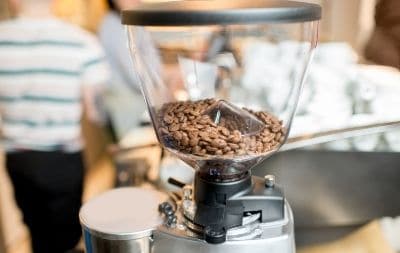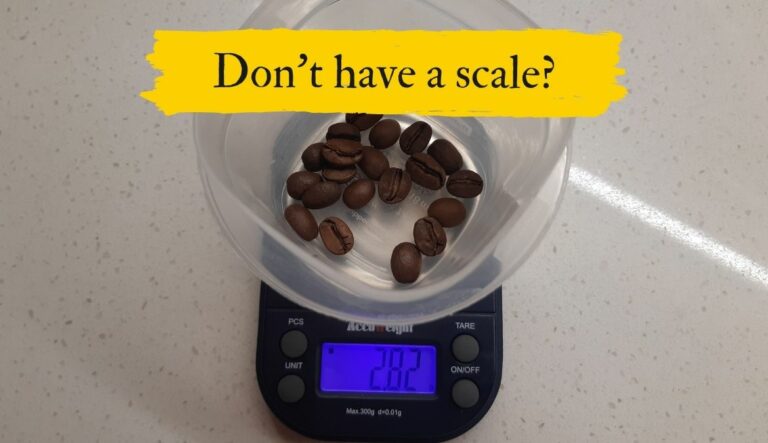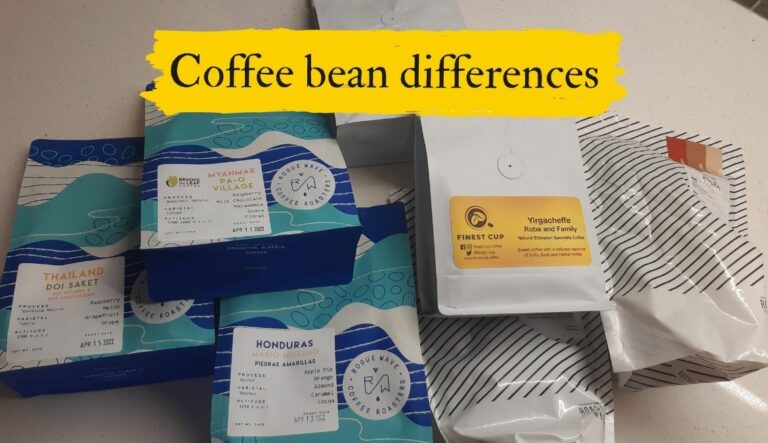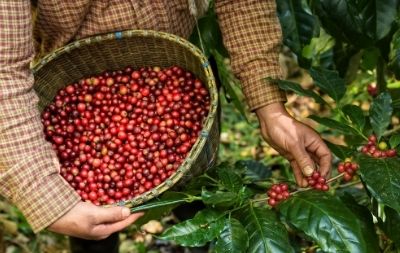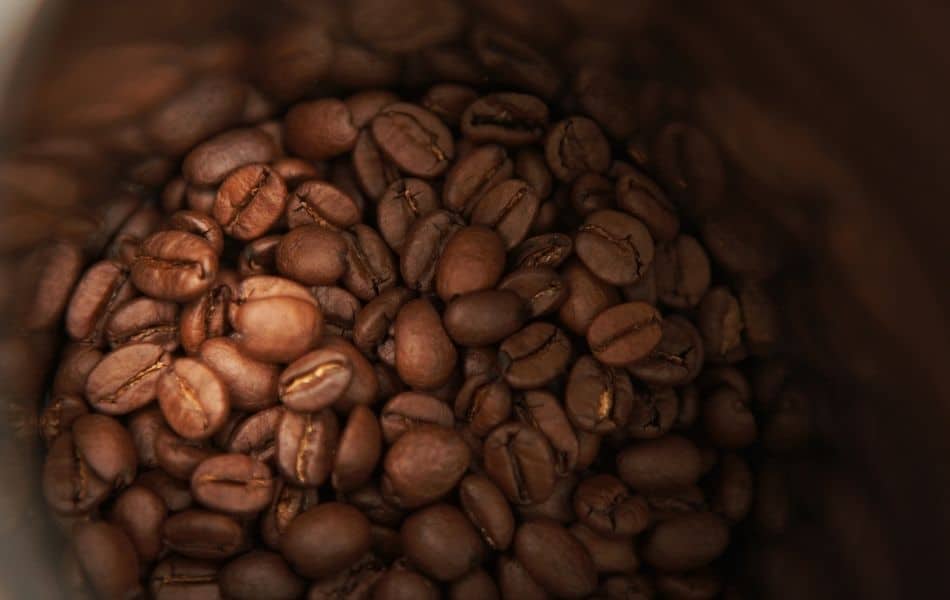
It happens to all of us coffee lovers. You wake up in the morning, eager to start the day and dive into your first cup of coffee. You grab a coffee bean bag that’s been stored away. You brew your favorite blend and the taste is disappointing. Unfortunately, the coffee beans have gone stale.
Why do coffee beans go stale? Coffee beans go stale when they are exposed to environmental factors such as oxygen, moisture, temperature and light. This starts when the beans are roasted because the protective silverskin is removed and bean porosity increases.
Keep reading ahead to understand the science behind why coffee beans go stale and what you can do to improve your coffee shelf-life.
Coffee bean roasting initiates staling
There are many factors that cause coffee beans to go stale over time. But many of these factors won’t affect how stale coffee is until the beans have been roasted. So let’s talk about how the roasting process affects staleness.
Roasting causes a loss of volatile compounds
While coffee beans are being roasted, their mass decreases while their porosity increases. This causes the diffusion of volatile compounds to also increase.
To simplify, diffusion is the random movement of molecules due to changes in pressure or concentration. And volatile compounds are those that quickly evaporate at normal temperature. A great loss of volatile compounds from coffee beans indicates that they’re losing their freshness.
Roasting increases oxidation
Chemical reactions occur inside the coffee beans which produce compounds that attract oxygen molecules. This inflow of extra oxygen causes fats and oils in the coffee beans to decay due to a process called oxidation.
When oxidation occurs in fats, it’s called rancidity. Rancidity is the process by which fat is degraded and is a tell-tale sign of stale foods. Roasting produces some other unstable products which along with other factors, can speed up rancidity.
Roasting causes carbon dioxide to escape
The carbon dioxide found in roasted coffee beans contributes to their flavor profile. Unfortunately, soon after roasting the carbon dioxide begins to escape the beans.
Additionally, it’s been found that two key components to a coffee’s strong aroma are methanethiol and 2-methylpropanol. Just two days after roasting, both of these compounds were found to be reduced. Similarly, after 8 days, only 70% of methanethiol was left in those beans.
Roasting changes coffee bean composition
When it comes to pre-packaged coffee beans, roasted beans are the norm. They can be in whole bean or ground form. However, most of us are unaware of how coffee beans chemically and physically change once roasted.
Coffee beans subjected to extreme heat for a long period of time, undergo a cascade of changes. To begin with, the sugar and amino acid content in coffee beans decline. At the same time, carbon dioxide gas starts to accumulate within the beans.
Did you know that the roasting process involves a number of chemical reactions? That’s how green coffee beans transform into the ready-to-grind beans we all know and love. Roasting is what gives coffee beans their trademark flavor and aroma. And different types of roasts have a variety of flavor notes.
As you can see, all of these reactions caused by roasting stimulate coffee bean staling. Nonetheless, the following surrounding elements may continue the staling process:
Exposure to oxygen increases coffee bean staleness
Exposure to air or oxygen affects the shelf-life of coffee beans in several ways. Oxygen contributes to the loss of volatile compounds and degassing of carbon dioxide.
As stated above, the compounds produced in roasting that attract oxygen molecules would thrive. Under those circumstances, rancidity would easily be triggered. Research shows that with each increase in oxygen by 1%, it corresponds to an increased rate of staling of coffee beans by 10%.
Moisture causes staleness
Humid environments or areas with a lot of air moisture content can be detrimental to coffee beans. This is because coffee beans absorb all that excess water. If they absorb more water, more volatile compounds will be lost and the rate of degassing would increase. With that said, rancidity would also be activated.
Increased temperature accelerates coffee beans staling
In the science community, it’s a well-known fact that temperature affects chemical reactions. It makes molecules move around faster. So basically, an increase in temperature accelerates all reactions.
In the context of coffee beans, higher temperatures increase the diffusion rate of molecules. Next, the pressure within the beans would increase which causes the carbon dioxide to be lost faster. As a result of more oxygen being absorbed, rancidity would be accelerated. Not to mention, the aromatic components would quickly decrease.
And the evidence is out there. A study found that the rate of carbon dioxide loss increased by 1.5 times for every 10 degree increase in temperature.
Sunlight causes photodegradation
Direct sunlight on coffee beans can have the same effect as temperature. It increases the evaporation of volatile and aromatic compounds and increases the rate of carbon dioxide loss. This process is called photodegradation.
For this reason, condensation could form because of the increase of temperature, which would then cause moisture build-up.
How to store your coffee beans to prevent staling
Ground beans vs whole bean storage
The form and correct storage of coffee beans is important to prevent spoiling. It’s related to porosity. Remember when I discussed how porosity increases the rate of degassing and staling?
Well, if you grind your coffee beans, you’re further increasing their porosity and their surface to volume ratio. Ground coffee beans just speed up the process. I’d suggest buying whole coffee beans and grinding only a small amount to use within the next few days. If you must buy ground coffee, then buying only in small portions will slow down staling.
Use an air-tight container to prevent oxidation
Coffee bean packaging is usually vacuum sealed and some have valves to allow carbon dioxide to flow out. Sadly, beans don’t stay fresh for long in their original bag, especially once opened. To ensure freshness, once you open the package to use, put the rest right away into an air-tight container.
Using an air-tight container to store your coffee beans makes certain no oxygen or moisture can get in. Statistics have shown that if coffee’s kept in an air-tight container with only 0.5% oxygen, you could increase its shelf-life by 20 times.
Keep your coffee canister away from heat or direct sunlight
As I mentioned before, temperature and direct sunlight can negatively alter your coffee beans. That’s why it’s important to keep your coffee bags or canisters in a dark and cool place. Try to get a canister that’s opaque so that if it’s exposed to some light, not much will get through to the beans.
Freezing your coffee beans
As an alternative to keeping coffee on their shelf, a lot of people freeze their coffee beans. Yet, freezing may not be the best option. There’s been no real evidence or research that freezing your coffee beans halts the staling process.
To make matters worse, your coffee beans can easily absorb other freezer odors and become freezer burnt. If that were to happen, the beans would take in all that extra moisture. If you’re really keen on freezing your coffee beans, always use an air-tight container. Likewise, you should freeze your beans only in small amounts at a time and use them as soon as possible.
Well the science doesn’t lie. All coffee beans eventually go stale. And it’s mainly due to roasting. But keep the other unfavorable conditions in mind. Remember to always check the roasting date when you purchase coffee and don’t buy in bulk. Hopefully with your new found knowledge of coffee beans, you can slow down the staling process and extend your coffee’s shelf-life.

